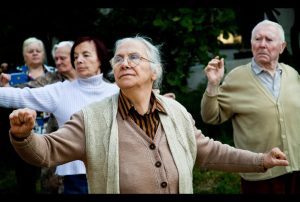Healthy Eating Habits for Common Health Conditions
Having a healthy diet is important to your wellness as a whole, but when you have specific health conditions, it may be time to inspect how changes to your diet can impact your well-being. Check out these areas of health that recommend specific diets.
Heart Health
Your cardiovascular health is incredibly important to your overall health. As heart disease is the leading cause of death in the United States, having a diet that promotes heart health is crucial. Eating plenty of fruits, vegetables, and healthy protein will aid in your heart health. Choosing whole-grain options and minimizing processed foods, salt, and alcohol in your diet will also be beneficial to your cardiovascular health.
Creating a diet plan with your doctor can help you understand what foods help or harm you in the long run, as well as help you understand the importance of maintaining a healthy diet. You should monitor your heart health frequently as you age to ensure the swift identification of any changes to your cardiovascular wellness.
Eye Health
As you age, the health of your eyes changes. Between glaucoma, age-related macular degeneration, cataracts, and diabetic retinopathy, it’s incredibly important for you to have your eye health top of mind. Introducing eye-friendly nutrients into your diet can ensure the longevity of your eye health. Lutein, which you’ll find in dark leafy vegetables, along with vitamin c, vitamin e, and omega-3 fatty acids, can all play an important role in the health of your vision.
Aside from your diet, reviewing your corrective lenses on an annual basis is a small task that can yield great results for your overall health. This can include making sure you update your prescription eyeglasses often so you can quickly identify any changes to your vision. Catching these changes early on ensures you take the right steps in adjusting your lifestyle for the sake of your eye health. Prioritizing your vision and making a diet conducive to the optimal health of your eyes can help ward off the onset of many age-related eye problems.
To keep the health of your gut top of mind, creating a gut-conscious diet is imperative. This diet should include probiotics, prebiotics, fiber, and fermented foods. Incorporating foods like this should increase the good bacteria found in your gut which helps ward off illness. If you have any of the above-mentioned autoimmune disorders in your family history, it is important to take care of your gut early on and learn about the ways you can make your health as optimal as possible.
Staying on top of your health will always need to be a top priority. Understanding any conditions you have, or could have in the future based on your family history, helps you create a prevention plan. Diet, exercise, and environmental changes are all things you can alter for the sake of your health. Prioritizing your wellness will always be a necessary step for the longevity of your life.




